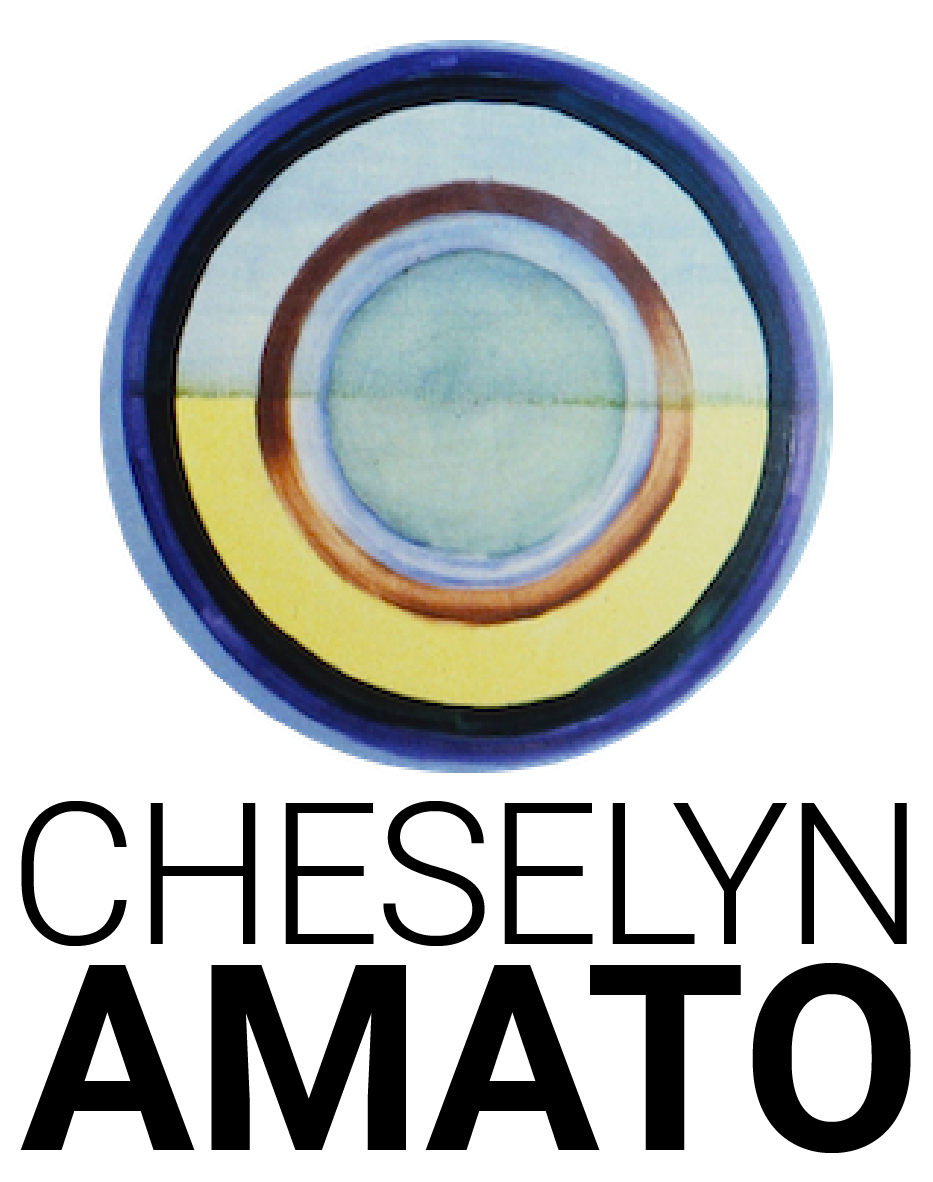Summer 2013
A Sign Of The Times: Contemporary American
Post-Holocaust Imagery And Post-Jewish Identity
Stacy Rebecca Schwartz
San Jose State University
Cheselyn Amato’s work, exhibited in The New Authentics, also removes charged imagery from a specific context in order to explore its meaning. Amato’s Fabric Collage (Placemats, Napkins, and Death Camps) (2004) digitally printed mixed media piece juxtaposes the bold colors and prints of table linens with an aerial photograph of a concentration camp.
The blending of the fabrics, an element of “civilization,” and the photograph of the camp create uncertainty about the origins of the collage media, as does Amato’s play with the formal elements of the camp photograph. The two-tone aerial view with its repetitive placement of buildings emphasizes line, color, and pattern rather than the horrifying reality of the image itself; the plastic canvas overlay accentuates the geometric shapes like a grid drawing and echoes the modern patterns of the fabrics on the left-hand side.
This mixture of the banal and the extraordinary is, to Amato, a “transformation of ordinary material into something stranger and more meaningful…,”169 …Amato focuses on our understanding of familiar objects and images and how incorporating these elements in a manner other than their intended purpose can challenge this understanding. Yet, Amato’s work also exemplifies the idea that the ability of an object (or image) to be interpreted in more than one manner simultaneously can be potentially troubling, particularly with regard to the Holocaust in a media-saturated world. Amato’s works, and her process of creating them, speak to concerns of the Holocaust and its representation becoming diluted in the constant influx of symbols by which one is bombarded in contemporary everyday life. Rather than creating her collages from the materials themselves, Amato arranges her various materials on a scanning bed and prints a digital image, often reusing her materials and compositions in different works. The aerial camp image in Fabric Collage, for instance, is re-used in works for her series Excavation/Exhumation: Cataclysm/Redemption Cycles (2003) in composition with materials not used in Fabric Collage. In the works in which the aerial camp image is used, it is in the background, a sort of canvas for the other objects. “As the events of the Holocaust transition from memory to history, Amato’s receding image of a camp among layers of cheery textiles exemplifies the lure of moving on.”170
___________________________________________________________________________________________________________
169 Lori Waxman, “Cheselyn Amato,” in The New Authentics: Artists of the Post-Jewish Generation
(Chicago: Spertus Institute of Jewish Studies, 2007), 65.
170Boris, The New Authentics, 27.
